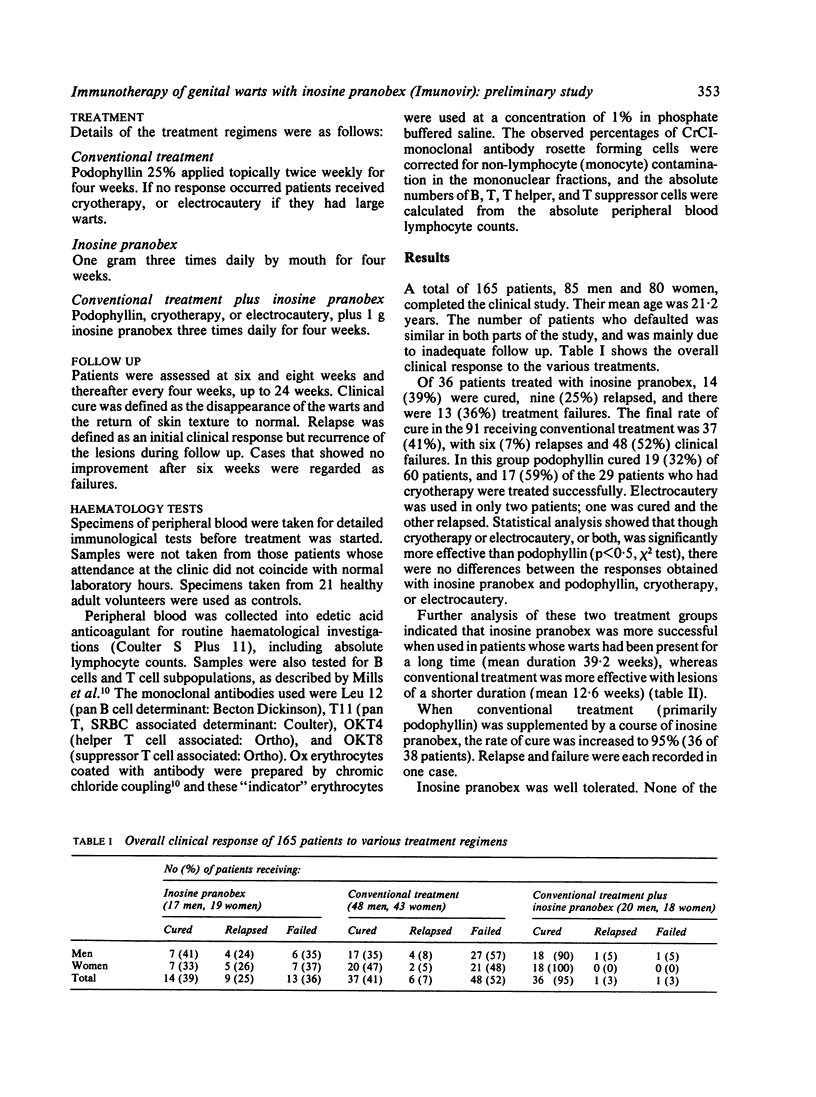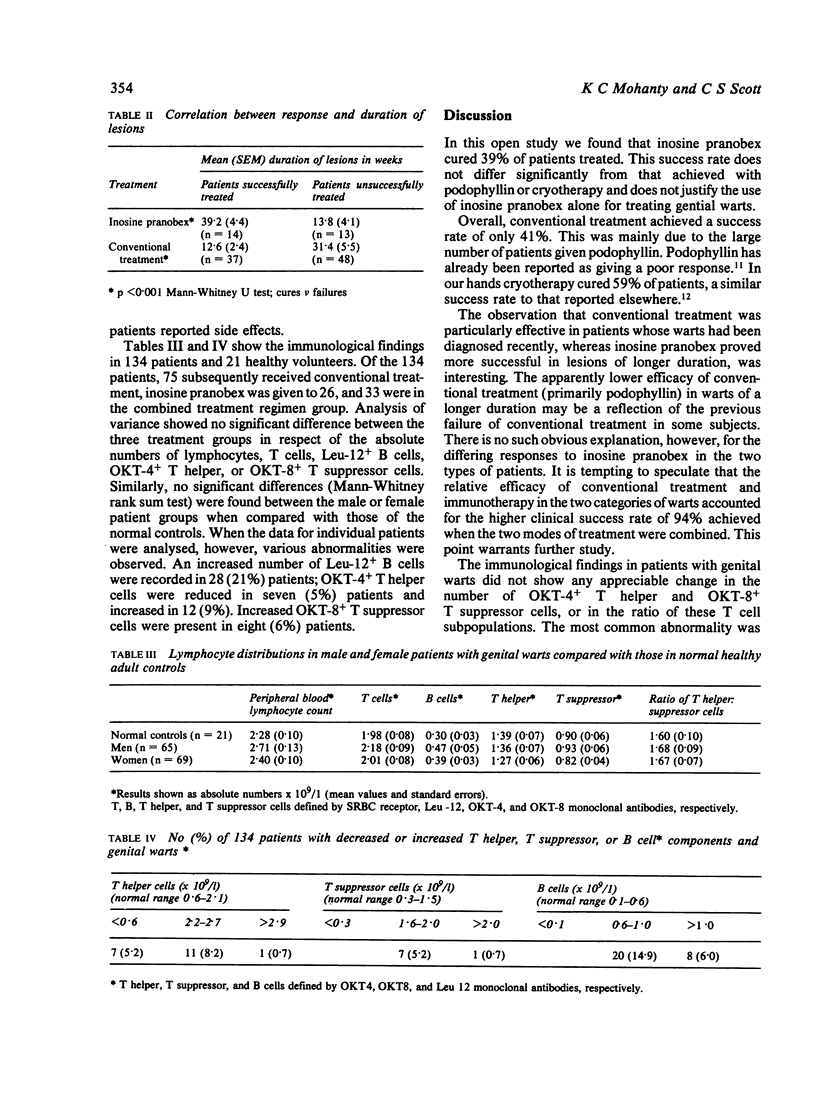Abstract
One hundred and sixty five heterosexual men and women with genital warts were treated with inosine pranobex (Imunovir) or conventional treatment, or both. Inosine pranobex was found to be more effective in lesions of longer duration, whereas conventional treatment was more effective in genital warts of a shorter duration. Supplementation of conventional treatment with inosine pranobex increased the success rate from 41% to 94%. Immunological studies in 134 patients with genital warts showed an increased number of B cells in 21% of peripheral blood samples. Absence of major defects among circulating lymphocytes suggested that patients with genital warts may have a local immune reaction.
Full text
PDF



Selected References
These references are in PubMed. This may not be the complete list of references from this article.
- Chretien J. H., Esswein J. G., Garagusi V. F. Decreased T cell levels in patients with warts. Arch Dermatol. 1978 Feb;114(2):213–215. [PubMed] [Google Scholar]
- Mills K., Armitage R., Worman C. An indirect rosette technique for the identification and separation of human lymphocyte populations by monoclonal antibodies: a comparison with immunofluorescence methods. Immunol Lett. 1983 May;6(5):241–246. doi: 10.1016/0165-2478(83)90012-3. [DOI] [PubMed] [Google Scholar]
- Mohanty K. C., Roy R. B. Thymus derived lymphocytes (T cells) in patients with genital warts. Br J Vener Dis. 1984 Jun;60(3):186–188. doi: 10.1136/sti.60.3.186. [DOI] [PMC free article] [PubMed] [Google Scholar]
- Pyrhönen S., Johansson E. Regression of warts. An immunological study. Lancet. 1975 Mar 15;1(7907):592–596. doi: 10.1016/s0140-6736(75)91880-2. [DOI] [PubMed] [Google Scholar]
- Pyrhönen S., Penttinen K. Wart-virus antibodies and the prognosis of wart disease. Lancet. 1972 Dec 23;2(7791):1330–1332. doi: 10.1016/s0140-6736(72)92776-6. [DOI] [PubMed] [Google Scholar]
- Schou M., Helin P. Levamisole in a double-blind study: no effect on warts. Acta Derm Venereol. 1977;57(5):449–454. [PubMed] [Google Scholar]
- Simmons P. D., Langlet F., Thin R. N. Cryotherapy versus electrocautery in the treatment of genital warts. Br J Vener Dis. 1981 Aug;57(4):273–274. doi: 10.1136/sti.57.4.273. [DOI] [PMC free article] [PubMed] [Google Scholar]
- Symoens J., Veys E., Mielants M., Pinals R. Adverse reactions to levamisole. Cancer Treat Rep. 1978 Nov;62(11):1721–1730. [PubMed] [Google Scholar]
- Syrjänen K. J. Immunocompetent cells in uterine cervical lesions of human papillomavirus origin. Gynecol Obstet Invest. 1983;16(6):327–340. doi: 10.1159/000299290. [DOI] [PubMed] [Google Scholar]
- Tripodi D., Parks L. C., Brugmans J. Drug-induced restoration of cutaneous delayed hypersensitivity in anergic patients with cancer. N Engl J Med. 1973 Aug 16;289(7):354–357. doi: 10.1056/NEJM197308162890707. [DOI] [PubMed] [Google Scholar]
- Väyrynen M., Syrjänen K., Mäntyjärvi R., Castrén O., Saarikoski S. Immunophenotypes of lymphocytes in prospectively followed up human papillomavirus lesions of the cervix. Genitourin Med. 1985 Jun;61(3):190–196. doi: 10.1136/sti.61.3.190. [DOI] [PMC free article] [PubMed] [Google Scholar]


